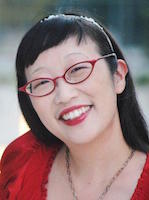Meet-the-Author Recording with Paula Yoo
From a Whisper to a Rallying Cry: The Killing of Vincent Chin and the Trial That Galvanized the Asian American Movement |
Paula Yoo introduces and shares some of the backstory for creating From a Whisper to a Rallying Cry: The Killing of Vincent Chin and the Trial That Galvanized the Asian American Movement.
Volume 90%
Press shift question mark to access a list of keyboard shortcuts
Keyboard Shortcuts
Play/PauseSPACE
Increase Volume↑
Decrease Volume↓
Seek Forward→
Seek Backward←
Captions On/Offc
Fullscreen/Exit Fullscreenf
Mute/Unmutem
Seek %0-9
Translate this transcript in the header View this transcript Dark mode on/off
This Meet-the-Author Recording with Paula Yoo was exclusively created in May 2021 by TeachingBooks with thanks to W. W. Norton & Company.



